Currently Empty: ₹0.00
Trusted by leading hotels
corporate gifting partner for 25+ companies
promising purity and potency
produced in small batches
Trusted by leading hotels
corporate gifting partner for 25+ companies
promising purity and potency
produced in small batches
How To Brew
Why Chamomile Tea Might Be Your Gentle Sleep Companion
There’s something undeniably comforting about ending your day with a warm cup in hand. The world outside slows down, the screens go dark, and for a few quiet moments, everything feels still. It’s in this quiet space that chamomile tea has found its sacred role for centuries — a gentle brew known to soothe the soul and softly beckon sleep.
Chamomile tea isn’t just another bedtime drink. It’s a ritual, a moment of pause, and a whisper to the nervous system that says, “You’ve done enough today.”
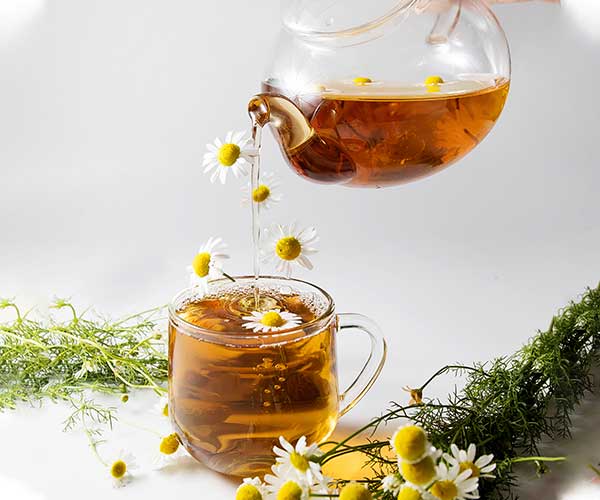
The Ancient Plant Behind the Modern Brew
Chamomile may look like an unassuming wildflower — white petals with a golden center, like miniature suns — but its legacy stretches deep into ancient civilizations. The most commonly used varieties in teas today are German Chamomile (Matricaria chamomilla) and Roman Chamomile (Chamaemelum nobile), both belonging to the daisy family.
To make chamomile tea, the delicate flower heads are harvested and slowly dried, preserving their essential oils and therapeutic properties. When hot water meets those blossoms, they release a soothing aroma — floral, slightly sweet, and unmistakably calming.
“Wellbeing begins not with a pill or a plan, but with a sip that listens to your body.”
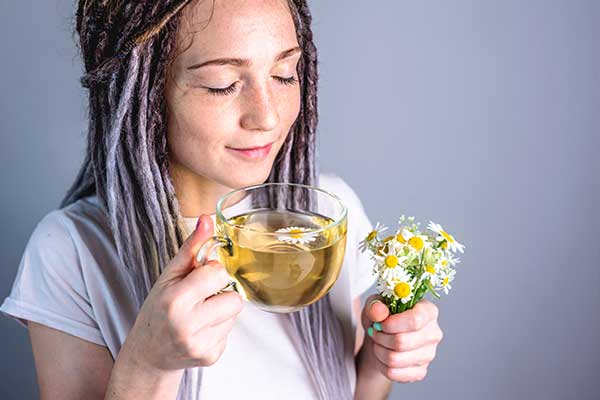
Does It Actually Make You Sleepy? What Science and Stories Say
Chamomile has long been called “nature’s tranquilizer” in folk traditions. The ancient Egyptians used it to calm fevers and nerves. The Romans sipped it for clarity and digestion. Even in Ayurvedic texts, chamomile aligns with dosha-balancing principles, especially calming excess vata — often associated with restlessness and anxiety.
But what does modern research say?
- A 2015 study focused on postpartum women experiencing poor sleep. After drinking chamomile tea for two weeks, participants reported better sleep quality and fewer symptoms of depression and fatigue.
- A 2019 review of clinical trials suggested that chamomile may help improve subjective sleep quality, reduce nighttime awakenings, and ease anxiety — although researchers noted that further large-scale studies are needed for definitive conclusions.
While chamomile doesn’t contain strong sedatives like prescription sleep aids, its mild tranquilizing effects are believed to come from an antioxidant called apigenin, which binds to receptors in the brain responsible for initiating sleep.
So does chamomile make you sleepy? Not in the knock-you-out way — but in a gentle, grounding, body-quieting way that invites rest instead of forcing it.
What Does Chamomile Tea Taste Like?
If you’ve never tasted pure chamomile, prepare for something light and lovely. The best chamomile teas — like those made with plump Egyptian blossoms — carry a distinct honeyed aroma, mild floral sweetness, and a soft, creamy finish.
Unlike bold teas or heavily spiced blends, chamomile doesn’t try to steal the spotlight. It’s mellow and modest — which is exactly what makes it perfect for winding down.
Many wellness blends now pair chamomile with other relaxing herbs like lavender, spearmint, rose, or valerian to enhance its sleep-promoting properties. But the solo act is still a classic for a reason.
How to Brew the Perfect Cup of Chamomile Before Bed
Creating your bedtime tea ritual doesn’t have to be complex, but the details make a difference:
- Use filtered, hot water (around 90°C) — don’t boil it. Overheating can kill the delicate floral oils.
- Add 1-2 teaspoons of dried chamomile flowers or use a whole-flower tea bag.
- Steep for 5–7 minutes under a lid to trap the essential oils.
- Optional: Add a spoonful of raw honey or a drop of vanilla extract for sweetness.
- Sip slowly, with intention, about 30–60 minutes before you plan to sleep.
Pro Tip: Try dimming your lights, playing calming instrumental music, or journaling a few lines as you sip. Let chamomile be part of a broader bedtime ritual — not just a drink, but a winding-down experience
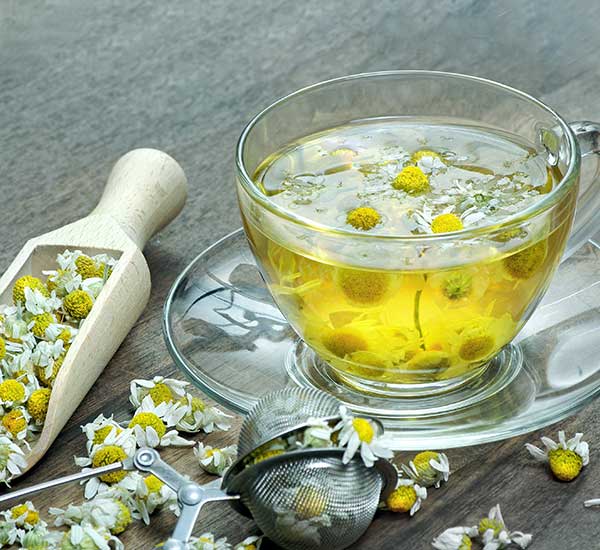
Can Herbal Teas Ease Anxiety?
In the symphony of daily life, anxiety often plays the loudest notes—racing thoughts, a pounding heart, and a restless spirit. Amidst this cacophony, a simple cup of herbal tea can act as a gentle conductor, guiding you back to a state of calm.
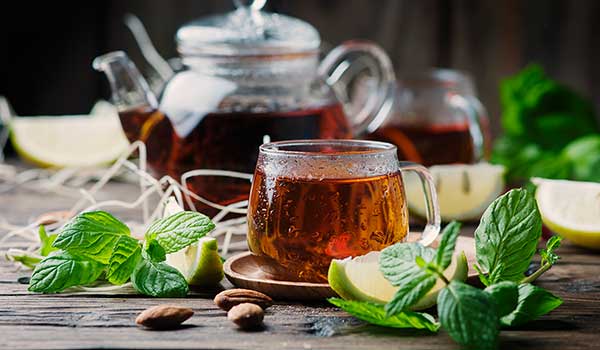
The Calming Elixirs of Nature
Herbal teas have long been cherished for their soothing properties. Among the most revered are:
- Lavender: Known for its delicate floral aroma, lavender tea has been shown to reduce anxiety levels and promote relaxation.
- Chamomile: Often referred to as “nature’s tranquilizer,” chamomile tea can help ease nervous tension and improve sleep quality.
- Lemon Balm: This citrus-scented herb is celebrated for its ability to uplift mood and reduce stress.
- Ashwagandha: An adaptogen that helps the body manage stress, ashwagandha tea can support the nervous system and contribute to better sleep quality.
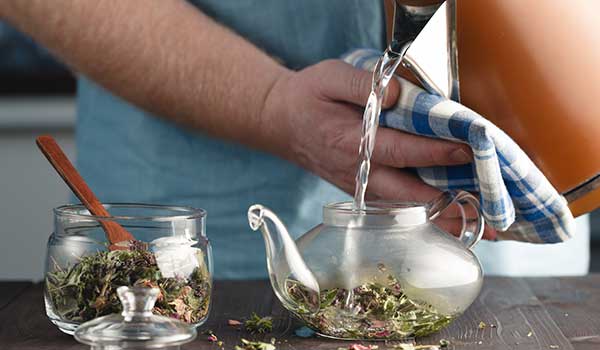
Brewing Your Way to Calm
Creating a calming tea ritual can be as therapeutic as the tea itself:
- Choose Your Herb: Select one or a blend of the aforementioned herbs based on your preference and needs.
- Steep with Intention: Use fresh, filtered water and steep your tea for 5-7 minutes, allowing the herbs to release their beneficial compounds.
- Create a Tranquil Environment: Find a quiet space, perhaps with soft lighting or gentle music, to fully immerse yourself in the experience.
- Sip Mindfully: Focus on the aroma, taste, and warmth of the tea, allowing each sip to ground you in the present moment.
A Note of Caution
While herbal teas are generally safe, it’s essential to consult with a healthcare professional, especially if you’re pregnant, nursing, or taking medications, to ensure there are no contraindications.
Can Tea Truly Aid Digestion?
Our digestive system is the cornerstone of overall health, processing not just food but also the experiences and emotions of our day. When digestion falters, it can ripple through every aspect of our well-being. Herbal teas offer a gentle, natural way to support and soothe the digestive tract.

Nature’s Digestive Aids
Several herbs have been traditionally used to promote digestive health:
- Peppermint: Known for its cooling effect, peppermint tea can relax the muscles of the gastrointestinal tract, easing symptoms of indigestion and bloating.
- Ginger: A warming herb, ginger tea stimulates digestion and can alleviate nausea and stomach discomfort.
- Fennel: With its mild licorice flavor, fennel tea can help reduce gas and support healthy digestion.
- Chamomile: Beyond its calming effects, chamomile tea can soothe the digestive tract and relieve mild gastrointestinal discomfort.

Brewing Digestive Support
To prepare a digestive-friendly tea:
- Select Your Herbs: Choose one or a combination of the herbs mentioned above.
- Steep Properly: Use boiling water and steep the herbs for 5-10 minutes to extract their beneficial properties.
- Enhance the Flavor: Consider adding a slice of lemon or a touch of honey to complement the taste and add additional digestive benefits.
- Timing is Key: Enjoy your tea after meals to aid digestion or whenever you experience digestive discomfort.
Mindful Consumption
While herbal teas can support digestion, they should complement a balanced diet and healthy lifestyle. If digestive issues persist, consult a healthcare professional to rule out underlying conditions.
Can Herbal Teas Alleviate Stress?
In the midst of our fast-paced lives, stress often becomes an unwelcome companion, manifesting as tension, restlessness, and a sense of overwhelm. Amidst this chaos, the simple act of brewing and savoring a cup of herbal tea can serve as a gentle antidote, offering moments of calm and clarity.
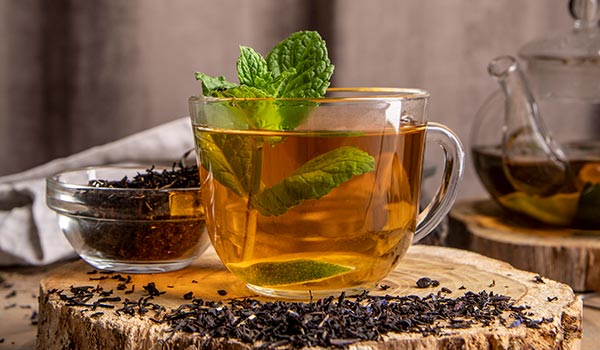
Nature’s Calming Infusions
Herbal teas have long been cherished for their ability to soothe the mind and body. Among the most revered for stress relief are:
- Chamomile: Known for its gentle, calming properties, chamomile tea can help ease anxiety and promote relaxation.
- Lavender: With its fragrant aroma, lavender tea is celebrated for reducing stress and improving sleep quality.
- Lemon Balm: This citrus-scented herb is known to uplift mood and alleviate anxiety.
- Ashwagandha: An adaptogen used in Ayurvedic medicine, ashwagandha tea may help the body manage stress by regulating cortisol levels.
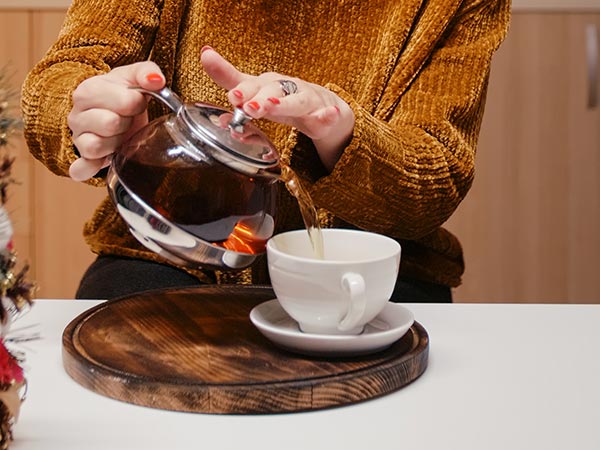
Creating a calming tea ritual can be a powerful tool in managing stress:
- Select Your Herb: Choose one or a blend of the aforementioned herbs based on your preference and needs.
- Mindful Preparation: Use fresh, filtered water and steep your tea for 5-7 minutes, allowing the herbs to release their beneficial compounds.
- Create a Tranquil Environment: Find a quiet space, perhaps with soft lighting or gentle music, to fully immerse yourself in the experience.
- Sip with Intention: Focus on the aroma, taste, and warmth of the tea, allowing each sip to ground you in the present moment.
A Word of Caution
While herbal teas are generally safe, it’s essential to consult with a healthcare professional, especially if you’re pregnant, nursing, or taking medications, to ensure there are no contraindications.
Can Tea Really Improve Focus and Mental Clarity?
In a world filled with constant pings, deadlines, and distractions, the ability to focus has become a rare gift. We chase productivity with caffeine-loaded drinks, only to crash hours later in mental fatigue. But what if the secret to sustained clarity lies in something gentler—something ancient and brewed?
Welcome to the mindful realm of teas that sharpen your senses while soothing your soul.

The Gentle Lift of Clarity-Enhancing Teas
Unlike harsh stimulants, certain teas work in harmony with the mind, enhancing attention, memory, and alertness—without the jittery side effects. Let’s sip through a few:
- Green Tea: With a delicate balance of caffeine and L-theanine, green tea provides a calm alertness—like the hush of early morning fog lifting from a still lake. L-theanine smooths the stimulating effects of caffeine, creating a state of focused tranquility.
- Tulsi (Holy Basil): An adaptogen rooted in Ayurveda, Tulsi tea helps balance stress hormones, which in turn improves mental clarity. It nurtures the nervous system, restoring balance in the chaos.
- Ginkgo Biloba: Revered in Chinese medicine for centuries, ginkgo tea may enhance blood flow to the brain, improving cognitive performance and memory.
- Matcha: A powdered green tea packed with antioxidants and chlorophyll, matcha is the focus drink of Zen monks. Its slow-releasing energy allows hours of centered productivity without the crash.
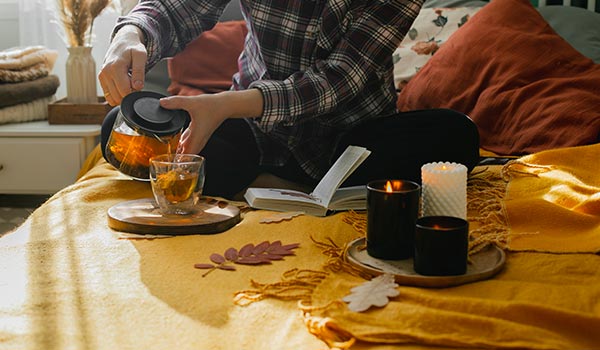
Brewing Your Focus Ritual
- Pick Your Power: Choose a tea that matches your rhythm—green tea for gentle mornings, matcha before tasks, or tulsi for evening study.
- Mind the Brew: Avoid boiling water for green teas (70–80°C is ideal). Steep for 2–3 minutes to retain the nuanced flavor and mental clarity properties.
- Pair with Practice: Sip during deep work, journaling, or reading. Let the steam and scent anchor you to the present moment.
An Ancient Answer to a Modern Problem
Modern science now supports what traditional healers always knew: herbal teas can enhance brain function. But their secret lies not just in the compounds—they create a pause, a ritual. A reminder that sometimes, slowing down is the fastest way to move forward.